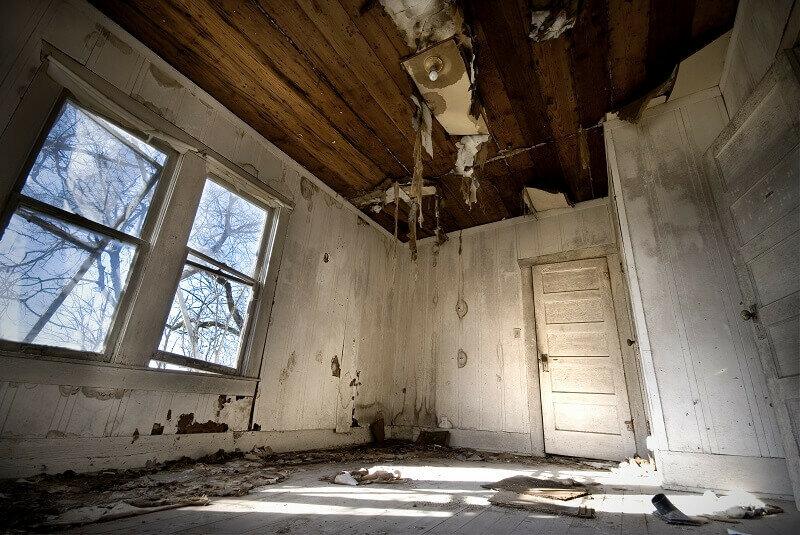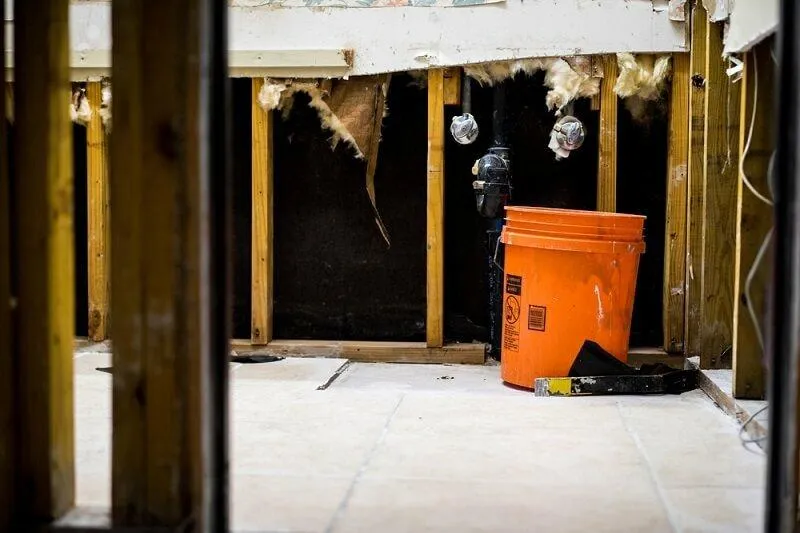
Call Us! (801) 845-3222
Can I Sell My House With Asbestos In It
April 18, 2021
By muhammeds
Hate to be the bearer of bad news, but if your Utah house was built prior to 1980, there is a possibility that your insulation, old floor tiles, roofing materials, and textured paint were constructed with asbestos- before there were any significant regulatory actions against this naturally occurring substance.
That being said, asbestos only poses a health threat when it’s distributed and the fibers are released into the air, which may happen with a home improvement project or renovation. However, people still live in and buy older properties all the time. Take a look at the “year built” field on the currently available listings on Realtor.com, and you’ll see lots of homes for sale that were constructed before the 1980s.

Before sticking that For Sale By Owner (FSBO) sign in your yard, you will need to know your responsibilities when it comes to selling your property. Unless you have a real estate background, there is a bit of a learning curve because it’s not every day you sell a Utah house.
It would help if you start by looking into the state’s laws and regulations. Here is an overview of some of those requirements you will need to be aware of.
What is Asbestos?
Surprisingly asbestos is a naturally occurring fibrous silicate mineral and is an excellent electrical insulator, and is highly heat-resistant. So for many years, it was used as a popular building material, so much so that according to the Mesothelioma and Asbestos Awareness Center, “At the height of its use, asbestos could be found in over 3,000 consumer products.
However, researchers eventually realized asbestos exposure is a health and safety hazard. When any material with asbestos is damaged or distributed, it can cause symptoms like:
Chest pain
Shortness of breath
Abdominal pain
And lead to long-term health issues such as mesothelioma and asbestosis.
Having exposure to damaged asbestos is dangerous and can threaten your health, but you’ve more than likely been in churches, schools, buildings, or a house with asbestos in your lifetime.
Thankfully, there is a ban on asbestos siding and the use of asbestos in materials such as commercial paper, flooring felt, roll board, and other products. And any new uses of asbestos have to go through testing and EPA approval before production. Today use of asbestos in new buildings is restricted through the Toxic Substance Control Act, however, you may be surprised to learn that it’s not entirely banned.
Different Types of Asbestos That May Be In Your Home
The word asbestos is an umbrella term that covers several minerals. There are actually six varieties of asbestos:
Crocidolite
Amosite
Chrysotile
Actinolite
Tremolite
Anthophyllite
You will more than likely find amosite or chrysotile asbestos present in your property. These are generally used in ceilings, walls, floors, roofs, insulation, and cement sheets. And to get a bit more scientific, amosite and chrysotile fall into the serpentine asbestos category instead of amphibole asbestos.
Serpentine asbestos makes up roughly 95% of all the asbestos used worldwide, and while dangerous, it is considered less so than amphibole asbestos. Research has shown it takes less exposure to amphibole asbestos than serpentine to cause cancer.
If you think your house has asbestos in it, don’t panic. When dealt with accordingly, you can safely take care of the problem and successfully sell your home.
Where Asbestos Might Be Used in Your House
If you’re suspicious that there is asbestos in your house, the worst thing you can do is try to deal with it on your own. When it comes to this hazardous material, there is no DIY-ing remediation or eradication. If your Utah property was built prior to the ’80s, you could find asbestos in any of the following materials in your house:
Roof Shingles or Siding
Spray-on Insulation
Insulation around steam pipes, boilers, or ducts
Insulation around furnaces or stoves
Ceiling and Floor Tiles
Textured Paint on walls
Cement
Other spots where asbestos might be lurking in your house would be worn or damaged finishes, fixtures, and tiling. It can also be discovered while doing an attic renovation, drilling in drywall, and removing vinyl floor tiles. Remember, asbestos is only harmful to you when it’s released into the air. So as long as these materials are undamaged, they shouldn’t pose a threat.
→ Dealing with an inherited house that contains asbestos and was hoping to sell? Find out more about selling an inherited property in Utah by clicking here.
Identifying & Testing for Asbestos
If you’re hoping to sell your house and suspect that there is asbestos present, you may want to consider getting out in front of the problem. Asbestos is often a deal killer for home buyers, so it’s best to address the issue before listing the property.
You can elect to wait until a prospective buyer requests official testing after a home inspection, but being proactive has the potential to bring more power during negotiations. Testing for asbestos before selling your Utah house could give you and the buyer peace of mind.
Asbestos can only be positively identified 100% by using a specialized microscope. If a home inspector thinks you might have asbestos in your house, they usually only identify it as an “asbestos-like material,” so you’ll need to get samples and send them to an EPA-certified lab. The home inspector can refer you to a specialist that can collect samples for you, which would be advised since this material is hazardous.
The Utah Department of Environmental Quality currently assists citizens in the inspection, removal, and safe disposal of asbestos. A licensed asbestos abatement contractor must undertake removal in public facilities, homes, and workplaces.
The cost to test for asbestos can range from $50-$180 if it’s mailed in or tested at an offsite testing facility. Onsite testing ranges from $250-$750. If you or your Utah home inspector suspects that asbestos is in the air, you might want to consider an air monitor test, which can cost anywhere from $300 to $1,200.
Should You Disclose or Repair Before Selling?
Unfortunately, once you know you have asbestos in your home, you can’t go back. But, you’re not legally obligated to do anything about asbestos in your place because unless the asbestos in your house is damaged, it doesn’t pose any threat to inhabitants. If in good condition, siding, flooring, and roofing materials containing asbestos can last several decades. However, the seller is obligated under state law to disclose to buyers defects in the property and facts known to the seller that materially and adversely affect the property’s use and value that a reasonable inspection cannot discover. So you’ll need to be honest about the situation, and you’ll want to be prepared for the buyer to ask for a price reduction or credit for repairs. In which case, it’s worth getting estimates on the cost of containment or removal of the asbestos. Depending on the amount of asbestos in your home, as well as where it’s located, the price will vary.
Fixing Asbestos
Depending on where the asbestos is located, you may decide to remove or contain the asbestos. In most cases, the alternative option, containment, is possible. But whether you remove it or contain it, you’ll need to hire a contractor that is EPA-certified in asbestos.

Containing asbestos might mean encapsulating the asbestos instead of removing it altogether. To contain asbestos typically costs 15% to 25% less than removal because you won’t have to pay for disposal fees.
The cost of removing asbestos in Utah can have a wide range of prices depending on where the asbestos is located. For example, removing asbestos from attic insulation can cost as much as $15,000. Removing tiles might cost $15 per square foot. On average, Utah homeowners spent between $1,200-$3,000 for asbestos removal in Salt Lake City. Ultimately, you’ll really want to consider the location and condition of the asbestos before deciding on the removal process.
Final Takeaways
If your house has asbestos that needs to be removed, but you’re not interested in paying the extra expense, you might consider selling your Utah house as-is to one of the cash home buyers in Salt Lake City. This option is recommended if your home has extensive or costly repairs, including asbestos removal that you’d prefer not to take on.
Selling your house to a cash home buyer is ideal in this situation, and you can easily get an offer by contacting a “we buy houses Utah” company like Cash Quick Buyers. They will be able to make you a cash offer on your home within 24-hours and close in as little as 7-days. You won’t even have to worry about hiring a real estate agent or trying to sell your house by yourself. Since you would sell directly to Cash Quick Buyers, realtors wouldn’t have to be involved with the sale, which means no hefty agent fees.
Selling your house as-is to Cash Quick Buyers would be a great solution when dealing with selling a property with asbestos in Salt Lake City. If you’re interested in working with Cash Quick Buyers, contact them today to learn more about how it works and their easy home buying process.
Get More Info On Options To Sell Your Home...
Selling a property in today's market can be confusing. Connect with us or submit your info below and we'll help guide you through your options.
What Do You Have To Lose? Get Started Now and let us get started putting together your offer...
We buy houses in ANY CONDITION in Utah. There are no commissions or fees and no obligation whatsoever. Start below by giving us a bit of information about your property or call (801) 845-3222...
